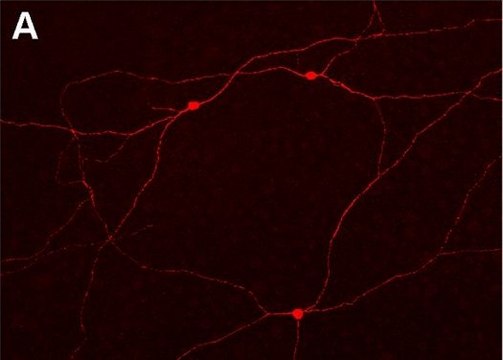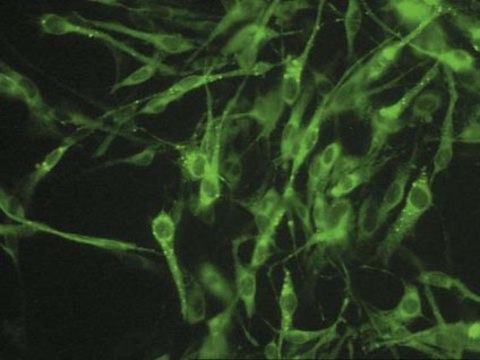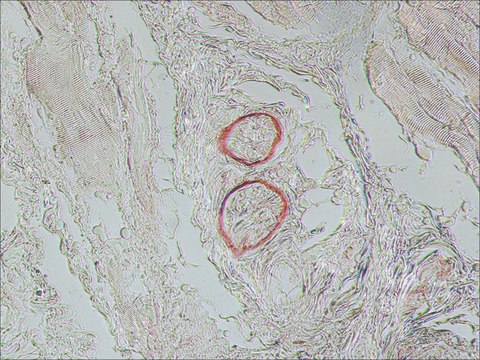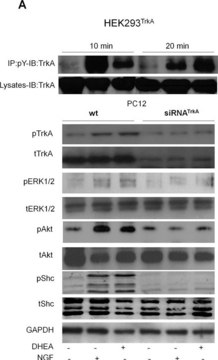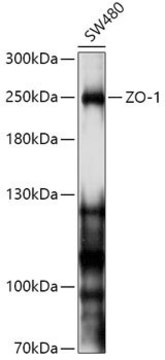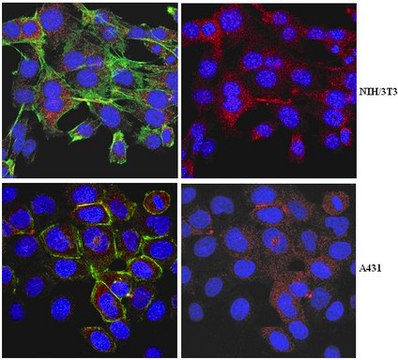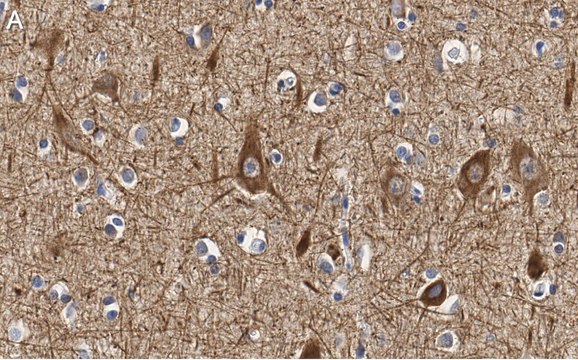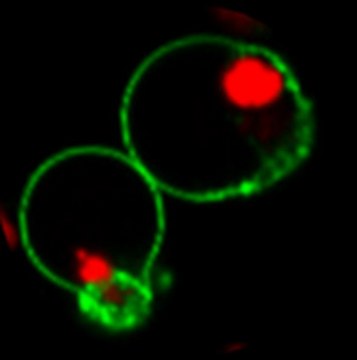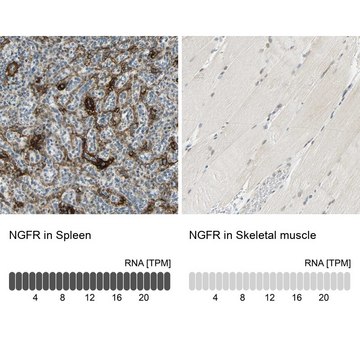MAB5264
Anti-Nerve Growth Factor Receptor (p75) Antibody, clone 8211
clone 8211, Chemicon®, from mouse
Sign Into View Organizational & Contract Pricing
All Photos(1)
Synonym(s):
NGF-Receptor p75, Low Affinity NGF Receptor, NGFR
UNSPSC Code:
12352203
eCl@ss:
32160702
NACRES:
NA.41
Recommended Products
biological source
mouse
Quality Level
antibody form
purified antibody
antibody product type
primary antibodies
clone
8211, monoclonal
species reactivity
human
manufacturer/tradename
Chemicon®
technique(s)
immunocytochemistry: suitable
immunohistochemistry (formalin-fixed, paraffin-embedded sections): suitable
western blot: suitable
isotype
IgG1
NCBI accession no.
UniProt accession no.
shipped in
wet ice
target post-translational modification
unmodified
Gene Information
human ... NTF3(4908)
General description
The low affinity NGFR (Nerve growth factor receptor) is a 75kDa membrane-spanning glycoprotein lacking intrinsic tyrosine kinase activity. p75NGFR interacts with TrkA, the high affinity NGF receptor and potentiates TrkA signaling at low NGF concentrations. The p75 receptor binds nerve growth factor, brain-derived neurotrophic factor, neurotrophin-3 and neurotrophin-4 with varying specificities. The p75NGFR plays an important role in neurotrophic factor signaling and has been shown to modulate the susceptibility of selective cellular populations to programmed cell death. It is expressed on many neuronal cells types including many embryonic forms and the receptor can be used to isolate neuronal progenitor cells.
Specificity
Reacts with NGF-receptors in human system.
Immunogen
Membrane fragments of the melanoma cell line WM-9 (Herlyn et al., 1983).
Application
Anti-Nerve Growth Factor Receptor (p75) Antibody, clone 8211 is an antibody against Nerve Growth Factor Receptor (p75) for use in IC, IH, IH(P) & WB.
Immunohistochemistry: 5-10 μg/mL
Immunocytochemistry: 5-10 μg/mL
Immunohistochemistry on paraffin sections: Cattoretti, Blood 81:1726-1738, 1993. http://www.bloodjournal.org/cgi/reprint/81/7/1726.pdf
Western Blot: 1ug/mL
Immunoabsorptive purification of NGF-receptors
Optimal working dilutions must be determined by end user.
Immunocytochemistry: 5-10 μg/mL
Immunohistochemistry on paraffin sections: Cattoretti, Blood 81:1726-1738, 1993. http://www.bloodjournal.org/cgi/reprint/81/7/1726.pdf
Western Blot: 1ug/mL
Immunoabsorptive purification of NGF-receptors
Optimal working dilutions must be determined by end user.
Target description
75 kDa
Linkage
Replaces: 04-1111
Physical form
Format: Purified
Other Notes
Concentration: Please refer to the Certificate of Analysis for the lot-specific concentration.
Legal Information
CHEMICON is a registered trademark of Merck KGaA, Darmstadt, Germany
WGK
WGK 2
Flash Point(F)
Not applicable
Flash Point(C)
Not applicable
Certificates of Analysis (COA)
Search for Certificates of Analysis (COA) by entering the products Lot/Batch Number. Lot and Batch Numbers can be found on a product’s label following the words ‘Lot’ or ‘Batch’.
Already Own This Product?
Find documentation for the products that you have recently purchased in the Document Library.
Gaetana Minnone et al.
RMD open, 3(2), e000441-e000441 (2017-09-29)
To identify the role of mature nerve growth factor (mNGF), its immature form proNGF and their receptors in arthritis inflammation. Real-time PCR, western blot and ELISA were performed to evaluate NGF, proNGF, their receptor and cytokine expression in synovial tissue
Daisuke Ito et al.
PloS one, 14(3), e0213252-e0213252 (2019-03-07)
Olfactory ensheathing cells are thought to support regeneration and remyelination of damaged axons when transplanted into spinal cord injuries. Following transplantation, improved locomotion has been detected in many laboratory models and in dogs with naturally-occurring spinal cord injury; safety trials
Mary-Louise Rogers et al.
Journal of neuroimmunology, 226(1-2), 93-103 (2010-06-16)
The common neurotrophin receptor P75NTR, its co-receptor sortilin and ligand proNGF, have not previously been investigated in Natural Killer (NK) cell function. We found freshly isolated NK cells express sortilin but not significant amounts of P75NTR unless exposed to interleukin-12
Darren Carwardine et al.
PloS one, 12(12), e0188967-e0188967 (2017-12-12)
Olfactory ensheathing cell (OEC) transplantation is a promising strategy for treating spinal cord injury (SCI), as has been demonstrated in experimental SCI models and naturally occurring SCI in dogs. However, the presence of chondroitin sulphate proteoglycans within the extracellular matrix
Darren Carwardine et al.
Journal of the neurological sciences, 367, 311-318 (2016-07-18)
A multitude of factors must be overcome following spinal cord injury (SCI) in order to achieve clinical improvement in patients. It is thought that by combining promising therapies these diverse factors could be combatted with the aim of producing an
Our team of scientists has experience in all areas of research including Life Science, Material Science, Chemical Synthesis, Chromatography, Analytical and many others.
Contact Technical Service